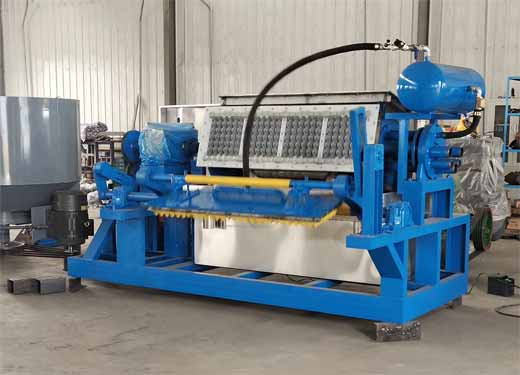Definition of pulp molding die cleaning
Pulp molding die cleaning is an essential process in the maintenance of pulp molding dies used in the production of various molded pulp products such as egg trays, fruit trays, and packaging materials. The process involves the removal of debris, pulp residues, and other contaminants that accumulate on the surface of the die during the molding process.
The importance of regular cleaning cannot be overstated as it not only ensures the longevity of the die but also enhances its performance. Failure to clean the die regularly may lead to the accumulation of contaminants, which may affect the quality of the molded products, leading to rejection, increased production costs, and loss of revenue. Furthermore, the accumulation of contaminants may cause damage to the die’s surface, resulting in reduced precision and accuracy, affecting the product’s dimensional stability.
Regular cleaning of the pulp molding die helps to maintain its surface cleanliness and integrity. It also eliminates the risk of contamination of the molded products, which is particularly crucial in the food and medical industries. The removal of debris and other contaminants also helps to prevent the accumulation of bacteria, fungi, and other microorganisms that may grow on the die’s surface, affecting the quality of the molded products.
Common Methods for Cleaning Pulp Molding Dies
When it comes to cleaning pulp molding dies, there are two main methods that are commonly used: dry cleaning and wet cleaning. In this section, we’ll explore the different techniques that fall under each of these categories.
Dry cleaning methods involve the use of tools and equipment that don’t require water or other liquids to clean the die. Here are some of the most common dry cleaning methods used for pulp molding dies:
- Brushing: This method involves using a brush or other tool to physically remove any dirt, dust, or debris from the surface of the die. Brushes can be made from a variety of materials, including natural bristles, synthetic fibers, or wire.
- Air blasting: This technique uses compressed air to blow away any loose material on the die. Air blasting is particularly useful for hard-to-reach areas that may be difficult to clean with a brush.
- Vacuuming: This method involves using a vacuum cleaner to suck up any loose debris from the die. Like air blasting, vacuuming is often used for areas that are difficult to access with a brush.
Wet cleaning methods involve the use of water or other liquids to clean the die. Here are some of the most common wet cleaning methods used for pulp molding dies:
- Pressure washing: This technique uses a high-pressure stream of water to remove dirt and debris from the die. Pressure washing is particularly effective for cleaning large areas of the die quickly.
- Chemical cleaning: This method involves using chemicals to dissolve and remove any buildup on the surface of the die. Chemical cleaners can be harsh, so it’s important to choose the right cleaner for your specific die material.
- Steam cleaning: This technique involves using high-temperature steam to loosen and remove dirt and debris from the die. Steam cleaning is particularly useful for cleaning hard-to-reach areas and for disinfecting the die.
It’s worth noting that not all cleaning methods are suitable for all types of pulp molding dies. For example, some dies may be made from materials that are sensitive to water or chemicals, in which case dry cleaning methods may be more appropriate. Consult your die manufacturer or a cleaning professional to determine the best cleaning method for your specific die.
Best Practices for Pulp Molding Die Cleaning
To ensure the safe and effective cleaning of pulp molding dies, it is important to follow best practices that help protect the die and the cleaning personnel. Here are some of the best practices for pulp molding die cleaning:
A. Wear appropriate personal protective equipment (PPE) It is crucial to wear appropriate PPE when cleaning pulp molding dies. This includes safety goggles, gloves, and protective clothing to protect against chemical exposure, flying debris, and other hazards.
B. Use the right cleaning agents and tools Using the right cleaning agents and tools is essential to avoid damage to the die. Mild cleaning agents such as soap and water, baking soda, or vinegar can be used to clean the die. Avoid using harsh chemicals that can corrode or damage the die surface. Soft-bristled brushes, sponges, or cloths should be used to avoid scratches or dents.
C. Follow the manufacturer’s instructions It is important to follow the manufacturer’s instructions for cleaning the pulp molding die. These instructions provide information on the specific cleaning agents and tools that can be used on the die, as well as any specific cleaning techniques to avoid damaging the die surface.
D. Regularly inspect and maintain the die Regular inspection and maintenance of the pulp molding die can help identify any damage or wear and tear that may need to be addressed during the cleaning process. This can help prevent further damage to the die and extend its lifespan.
